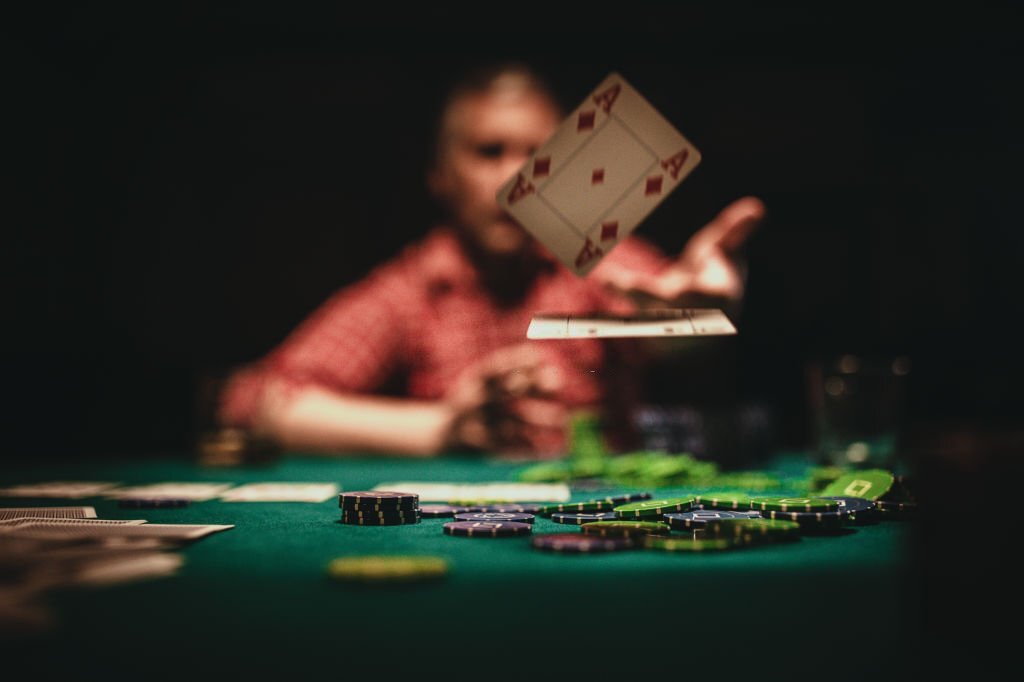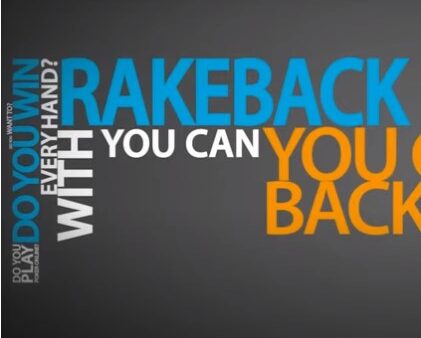
How to play poker tournaments.
Are you interested in learning the most crucial aspects of poker tournament strategy? Are you playing at your local casino’s weekly tournaments, playing small stakes at online poker sites, or competing at international live tournaments against a tough opposition? Here is the right place for you.
The thrill of having a big tournament with a healthy chip stack is difficult to beat—the trophy is worth tens or even hundreds of times the buy-in amount you paid to participate in the tournament. You’ll experience this scenario a lot more often as you progress on your poker journey, if you follow the expert suggestions in this article on tournament poker proper play.
We’ll go over the key components of poker strategy in this article, providing a quick checklist for new players. We’ll answer questions such as ‘how to play at the beginning of a poker tournament,’ ‘how to defend your Big Blind,’ ‘what continuation betting strategy to utilise,’ and ‘what to do on the bubble.’
Every poker tournament requires two things: you must win all the chips, and you must prevent other players from taking yours. The two objectives in MTT play are chip accumulation and survival. Therefore, handling these two objectives simultaneously may be difficult for many players. This article will certainly assist you in achieving both.
Modern tournament poker strategy is dominated by Texas Hold’em, because of its popularity. Here, we explore the world of tournament poker in 2021 and beyond.
Playing the early stages of MTTs;
Despite the fact that tournament play requires a unique strategy than cash games in general, the early phases of MTTs have several comparable characteristics: the stacks are large and no antes are present yet. In addition, the ICM pressure is minimal given that everyone has a long way to go to reach the money.
Recreational players and satellite winners who don’t know what they’re doing stay in the game, unlike cash games. Many players use the late-reg option and miss the first few levels when antes are not in play. It is not advisable to implement this strategy, even if you want to increase your advantage.
You should attempt to play against the weaker portion of the field as many recreational players won’t last to the middle and last stages of a poker tournament.
The early stages of a poker tournament are when you should exploit weak players the most, according to our expert. We advise starting with a conservative hand selection, but we recommend attempting to exploit weak players as soon as you’ve identified them.
Your strategy should include isolating their limp bets with a wide range, 3betting them in position, and raising more hands when they’re in the blinds. This strategy should be a part of your post-flop play in the early stages of an MTT.
Weakened players typically make significant mistakes post-flop, and you should get the most of these pots. You should also put pressure on the tight, fit-or-fold players who are not fighting for pots (unless they have a monster hand and are not letting go).
When you’re playing the early phases of a poker tournament, you don’t need to clash with the strong players by firing turn or river barrels when you have weak holdings like suited connectors, as there are no antes at that point. When a weak player enters the pot, you must take their chips before someone else does. Chips won’t last long when you don’t run big crazy bluffs every chance you get, but you must exploit the glaring errors these players make in nearly every hand.
Middle Stages of an MTT;
The play changes significantly in the middle stages of a poker tournament, when the stacks become shallower, the antes are paid, and fewer weak players remain in the tournament. In freezeout tournaments, players other than those who have amassed a large stack at this point are likely to be eliminated. Remember the following strategies:
In No Limit Hold’em, the Big Blind ante makes preflop odds much more favourable for openers, because a successful raise only needs to win a little bit of the time to be profitable in chips. Hence, we should raise more liberally.
If you drop below 20 big blinds, you should begin to tighten up your range again. You can either look for a good shove spot preflop or an advantageous spot to open-shove with a big stack. As long as the table conditions allow you to bully those medium-sized stacks, you can play more freely with a big stack.
Near the bubble, you might have to make some disciplined folds, since you’re not simply playing for chip EV anymore. You might shove 3bet or 4bet rather widely, but don’t call these shoves when you’re only slightly ahead or in a coinflip. You will occasionally get into situations in which your opponent has woken up with Aces and you have another premium hand, but that’s how tournament poker operates—things can change quickly in one hand!
It’s crucial to become familiar with handling a 10-25BB stack in the middle stages of a poker tournament, as you will frequently face decisions playing this stack size. You must be especially cautious because there is a risk of busting your stack at this level!
Bubble play in an MTT;
When there are only a few short stacks at different tables looking to min-cash when someone else goes bust, playing during the bubble can be exhausting. Your stack size and your own stack should determine your play:
During a bubble, you should take advantage of smaller stacks’ lack of willingness to post-flop call 3bet-shoves or big bets with less than premium hands by playing big stacks.
During a bubble, you should decide how long you will wait for the bubble to burst if you have a small stack. If big stacks at your table frequently punish steal attempts, folding strong hands to preserve your tournament life may be a good idea, but there is also another alternative if you have enough chips: 3-bet shoving over the top after a big stack has opened the pot. Because it benefits them to continue creating a bubble, their fold-equity of your 3-bet shoves is enhanced.
Stealing the blinds in MTTs;
If you are one of the smallest stacks in a poker tournament, you must risk your tournament life before being blinded out (unless some of the other small stacks drop out first).
A player who open-raises before the flop with the goal of winning the blinds and antes uncontested is stealing the blinds. Blind stealing is not a priority at the beginning of the round, but as the antes begin to accumulate and the stacks get shallower, every blind steal earns you enough chips for a whole round of play.
When attempting a blind steal, you should consider the following:
Players sitting in the Small Blind and Big Blind are forced to steal more when they don’t enjoy defending frequently.
When players after you have around 10-15BB stacks, steal less; it is likely that they will re-steal.
Sizing your raises and bets in MTTs;
In the last two decades, Bet-sizing in tournaments has altered significantly. Players would raise at least three big blinds or four big blinds or more preflop, and bet the pot on the flop in modern poker, but things are different now.
If you pay attention to high-stakes players participating in an international highroller tournament, you will frequently see an opening bet of between two and two and a half big blinds and a c-bet of the flop between ¼ and ⅓ of the pot, rarely over half.
The player who moves first in this direction and wins big in tournaments is Daniel Negreanu, also known as ‘Kid Poker.’ He created small-ball poker, where you use smaller raise sizes to play a wider range of hands.
You risk less of your stack than if you had played all your cards at once in case your plays don’t work out. Daniel Negreanu was successful at poker tournaments because he employed this style of play, which was unfamiliar to many of the players.
In certain situations, you may wish to size your bets up on the turn and river to put more pressure on your opponent. Particularly on boards where your opponent has not made any strong hand combos due to the pre-flop action, you can increase your bets.
Continuation betting in MTTs;
In the early 2010s, continuation betting 100% of the flops in poker tournaments was a powerful strategy, as many players would just call preflop and fold on the flop if they didn’t hit anything. In 2020, tournament players are a bit savvier than that, and we must have a balanced c-betting strategy to succeed.
The maths behind c-betting is the first thing you should understand if you want to construct a good c-betting strategy. For example, a 50% pot c-bet should go through 33% of the time to break even (not counting equity when called), and a smaller bet sizing like a 33% pot c-bet should work 25% of the time. These are pretty low percentages, meaning you should frequently c-bet.
It is important to consider how your opponent plays when deciding whether to c-bet or not. For example, you should check more flops against aggressive check-raisers and bluff less against fit-or-fold players when bluffing you if you show weakness. You should also carefully consider how you react to c-bets in order to play them wisely.
Defending your Big Blind in MTTs (fold it less!);
The big blind position is an excellent spot to battle back against a raise from late position as you only need a bit more than 20% equity to call. When there is one player left to act after you in the small blind, you should be more careful.
You should defend your big blind against infrequent late position raises, even if you do not get to the showdown because of a bad runout or villain aggression. Even when you don’t reach the showdown because of a bad runout or villain aggression, you don’t need a particularly strong hand to defend your big blind against an open.
The following guidelines are derived from basic tournament poker math:
You must defend your big blind quite a lot!
How much is quite a lot exactly? Against late position openings, you should defend at least 40% of all your starting hands either by calling or 3-betting. If you have an advantage against the opener, you should increase this percentage to well above 50%.
Postflop play after defending your Big Blind in cash games and/or HU SNGs is where we suggest honing your HU skills. Take part in these game types at partypoker and other online poker rooms to improve your post-flop play.
Mastering Final Table Play;
At this point of the tournament, you’ve either played well or been quite lucky—usually, it’s both, even if some players insist that they’ve played well exclusively. You’ve gotten this far, so you know whether you’ve played well or been quite lucky.
Although the ICM affects your decisions, you still have to make the tough folds that you would not if the payout ladder did not exist. You must remain aggressive to accumulate chips as well as accumulate chips in the final table.
By solely waiting for premium hands, you may get a couple of payjumps, but you will not have enough chips to battle for the championship or heads-up slots if you play passive and accumulate chips from weaker players at the table. The proper strategy in nearly all scenarios is to remain tight and utilise timely aggression to accumulate chips from weaker opponents at the table. You must avoid playing overly tight and passive in almost all conditions.
With regards to a difficult lineup, you must take more risks to avoid bunting, but we must usually fold before the hand is placed in the top ten percent. We can not fight back too much preflop with steep pay jumps, and as a result, you will be up against a stronger range when facing preflop aggression. However, if there are players that shove light, they will be identified at some point, and you will gain a pay jump – this is why you should avoid an enormous preflop battle unless you have a substantial monster.
It’s not smart to put pressure on shorter stacks than yourself (unless they are really short, like under 10BB) as their best choice is usually to fold. Even if a big stack is a slight favourite, risking his tournament life is not profitable. If there is only one big stack and many smaller stacks at the final table, you should avoid confrontation at all costs.
When playing in a final table, always adjust your strategy according to the situation. If there are tight players who fold or are fold-or-fit, steal from them relentlessly and 3bet them lightly. There may be multiple maniacs fighting for every pot they play, and you might have to stand against them at some point. However, you should normally be patient and wait for a moment when you have an edge against their range before you retaliate.
Conclusion;
Tournament poker is a great way to make money, and it’s also a lot of fun. Anyone who is willing to put in the hours and practice deliberately can play great poker. You might become a tournament monster if you study hand history analysis, examine your hand histories, and practise.
Read more poker articles, tips, and content to become the player you were born to be!
Paying a set amount named the buy-in, you can participate in a poker tournament. Poker tournaments may range from $1 to $100,000 in buy-ins.
If you gamble all your poker chips away, you will be eliminated from the poker tournament. The remaining participant will be awarded the majority of the prize pool, provided that the last person to be eliminated outside of the prizes is the bubble boy.
In most tournaments, the top 10% to 20% of players are in-the-money, meaning that they earn a portion of the prize pool.
Even the most experienced players have a hard time winning tournaments. You are almost certain to face all-in situations during a tournament, and you must keep at least a few chips in play to remain in the game. Even if you have a hand like AA, you will lose around 20% of the time, as AA is nearly an 80% favourite over other strong starting hands like smaller pocket pairs.
Yes, cash games are more difficult than tournaments because the stacks are much deeper, which makes post-flop decisions on the turn and river more difficult.
Mastering post-flop play all the way to the river with deep stacks is a difficult task and requires a lot of poker training and experience. Due to the shallow stacks, most hands finish either on the flop or before the flop in tournaments, resulting in a simpler game tree than in cash games.
The probability of winning a tournament is generally 10-20%, depending on your skills and the quality of players in the tournament. Even though it’s very unlikely that you’ll win, most of your successes will come from large-field tournaments. Because of this, even expert MTT players may experience hundreds of buy-ins in tournament poker. It’s clear that following a conservative bankroll management strategy is beneficial. You can play in thousands of tournaments and never finish first.
In other words, you should prepare for extreme swings in tournament play, particularly in those with large fields. You can find out more about bankroll management in our article on the subject.
There are many well-known tournament players out there who win huge prize pools and collect WSOP bracelets and WCOOP trophies, but you should focus on the long-term profitability of playing rather than the benefits of participating in big tournament fields. Those players are most likely the ones who have worked the hardest for years, if not decades, to achieve their current results.
Achieving success as a poker player relies on measuring return on investment (ROI) and BB/100 and striving to improve them over time (remember to account for rebuys and add-ons when calculating these statistics). You give yourself the best chance of winning over the long term by focusing on an overall profitable strategy, no matter the short-term fluctuations.















